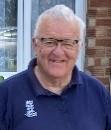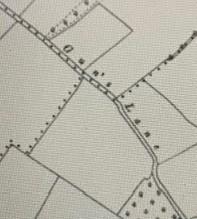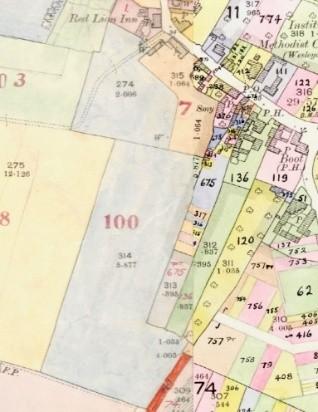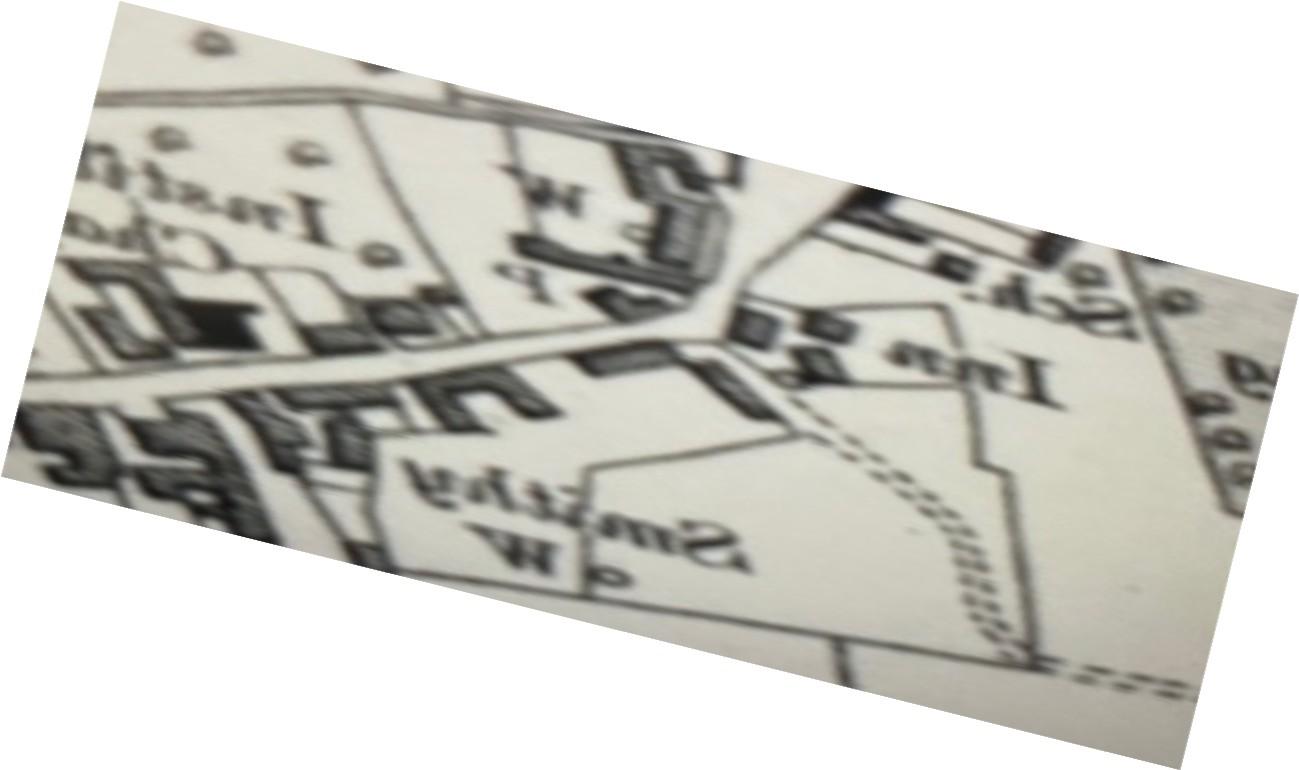

I was born towards the end of the Second World War and lived in Highfield Road, Impington. At just a few months old, thanks to my late mother’s alertness, I narrowly missed being injured when a neighbour’s bungalow, just a few yards away was bombed. I attended the local junior school and Impington Village College.
After marrying Janet, we lived in a 22ft caravan off Cottenham Road, Histon. After just over two years we moved to our current home in Cambridge. I have two sons Stuart and Andrew and a grandson Harvey who all share my passion for sport and in particular football and cricket. My fascination on how these two sports have evolved over the last 120 years is still a source of great interest for me and which I enjoy researching.
I want to take this opportunity to highlight several people who played a part in the origins of football in the two villages. Firstly, my grandfather C.P.(Charlie) Smith who I knew played football and cricket for Institute and was also secretary of the former from 1912 but what I didn’t know until I saw a photo of him in a team group was that he also played for Histon Rangers from the age of about sixteen. His playing career finished at the end of season 1919-20 and he became a well-known local referee who once took charge of an FA Cup tie at Luton Town. He was also a member of the magic circle from 1920. His great interest in later life was as secretary of Court Pride of Histon the local branch of the Ancient Order of Foresters Friendly Society, a position he held for many decades. He features several times on photos in this publication, something I know he would be very proud of.
His younger brother A.W.(Billy) Smith was very much a one-club person, playing football and cricket for Institute. He first appears in print as auditor for the local Boys Brigade team and then as Histon correspondent for the Saffron Walden Weekly News. He became the first secretary of the new Sports Ground, president of the Cambs Football Association and in the 1958-59 season became founder of the Cambs Professional Cup. He was Clerk to Histon parish council from1938-1974 and was well known in the village as local estate agent and auctioneer and agent for the old Anglia Building Society. He lived at The Haven, Cambridge Road, Impington.
My life-long family friend George Wakefield deserves some credit with the formation of football and other sports in the villages. An all-round sportsperson George represented the county at cricket and bowls, played football and ping-pong for the Institute and became a referee who once took charge of a game at the Institute ground on Christmas Day afternoon. George was involved with many admin roles in sport and helped set-up the Histon and District League. He was also a devout member of the Baptist Chapel and lived next-door to my grandparents in Highfield Road, Impington.
Percy Mowlam was another sporting all-rounder. Son of a local builder, Percy first came to prominence as a footballer while at the Higher-Grade School, Paradise Street, Cambridge. When the Cottenham club was formed, he became one of their first players. After a few years absence from the area Percy returned and helped to form Histon Rangers, was their first captain and played for them for many seasons. Percy married in 1914 but was sadly killed the following year whilst serving with the Suffolk Regiment during the First World War. He is commemorated on the Histon war memorial.
Institute and Rangers secretaries A.T. Rogers and T. Freeman were both appointed in the inaugural 1904-05 season and went on to give many years of service to both clubs not only in an admin role but also as players.
Village G.P. Dr F. Jupe played a big part in arranging meetings prior to Institute F.C. being formed. He acted as coach, physio, player and held regular first-aid training sessions at the Institute. He left the village in 1907 and moved to West Africa.
Jack Peck will arguably be known as the first “Stutes” legend. Appointed captain in 1904-05 he went on to hold the position for many seasons and was also a prolific goal scorer.
Harry Christmas senior was probably the only person to have played for Institute, Rangers and Histon Comrades. A goalkeeper of some repute he was also a successful cricketer for Institute and Comrades. Harry lived at School Hill, Histon and went on to become a policeman.
Finally, three people whose generosity and interest in football and other sports was invaluable. Namely, the presidents of Institute, Rangers and Histon Comrades, John Chivers, W. Ambrose Harding and Smith H. Rowley. The last named donated his field at Barretts Close, off Park Lane to the Comrades football and cricket teams.
ABBREVIATIONS. These are shown at the start of every season and are self- explanatory. In most cases the venue of a fixture played in Cambridge and venues of games played on a neutral ground are shown. Unless the result stands at the time of abandonment these games have not been included, although they are mentioned in the review of that season. The same applies to games that are later declared null and void, mainly because the club decide to leave a league during the season.
Please note that with all results the number of goals scored by either Institute or Rangers are shown first.
IN THE BEGINNING
The origins of football in the two villages can be traced back to November 1893 at the annual dinner of Histon and Impington Cricket Club. Cambridge Independent Press reported.
“A hearty vote of thanks was accorded to Mr S.H.Rowley for kindly placing his field at the disposal of the members, and in returning thanks, Mr Rowley said he should be very pleased to see a football club started in the village so that the young people of the village had some amusement to pass away the winter months as well as the summer , for which purpose he said he would be most happy to put his field at their disposal”.
The suggestion seems to have met with the approval of members present and a movement is afoot to form a football club. One of the cricket club’s vice-president’s and players was Mr Samuel Wilton Peed (son of the infamous Willaim Peed). His obituary in March 1915 refers to his sporting prowess and how he introduced football to Histon. There is a strong possibility that Mr. Peed coached and taught the rules of football to villagers from 1894 and there is a likelihood they could have cycled to nearby villages and to Cambridge to play as well as using Mr Rowley’s field for home games. However, despite an extensive search no trace could be found of any games played.
The next reference to football in Histon and Impington appears in the Cambridge Independent Press on 26th August 1904. when a Mr. J (John) B. Clapham sustained a broken collar bone and dislocated a shoulder whilst playing football.
Histon Institute FC was formed at a meeting held on 27th August 1904 when members and friends assembled in the Institute to hear a lecture from Mr Gaze, captain of St John’s College Football Association team on The Rules of Football. Mr Gaze illustrated his talk by means of a blackboard and chalk and was thanked by Dr Jupe (village GP) and Mr Rhodes who occupied the chair. This was followed by another lecture on 17th September by Mr S. Ayris of the Surrey County Football Association. These two meetings aroused a lot of interest which enabled Institute F.C. to form two teams for the forthcoming season.
A practice match was held on 24th September under the guidance of Dr. Jupe and H. Henshaw. In the meantime, the Saffron Walden Weekly News reported on 2nd September “A movement is on foot in Histon to start a new football club in the village and the adjoining parish of Impington. The movement is so far advanced that a new name to christen the proposed club with has already been suggested and that it is to be called the Histon Bell Rangers.”
Their founder was Mr Clapham who is mentioned above and at the time was landlord of The Bell Inn, Histon. It was his scratch X1 who were Institute’s first opponents followed by Bell Rangers the following week. There is a report in January 1905 that says both Institute and Bell Rangers had yet to win a game, although this was not the case as the latter had already defeated Institute. Apart from this no other reference to Bell Rangers could be found although they could have been playing the following season but not after that.
The original ground for Institute was situated near the windmill in Cambridge Road and became known as the Mill Field ground. There are several references to a team kicking towards the road end goal, assumed to be Cambridge Road, which gives an indication of the direction of the pitch. The 1926 photo of Mill Road shows a set of goalposts which are situated where the South Road play area is today. There are also reports the pitch was enclosed by means of a rope and the site having a pavilion, plus acknowledgements to gate attendants. These facilities were better than in surrounding villages and enabled the Cambs FA to stage cup and play-off semi-finals and finals on the ground. Their president at the time was Mr John Chivers, the football ground being on land belonging to the Chivers family. The ground was originally thought to be closer to the Windmill but photos in 1910 show that area to be a large strawberry field. This remained the home ground of Institute F.C. until October 1924 when they moved to the new sports ground, courtesy again of the Chivers family. The Saffron Walden Weekly News made the following favourable comments “Histon Institute made their first appearance on their new sports ground last Saturday, the match attracting
a large crowd. There was no formal opening as except for the football pitch the ground is not yet complete but when it is, judging from present appearances, there will not be a ground to rival it in the county.”
There were several other clubs formed in the two villages, especially post war when the interest in setting up football teams was immense. The most known were Histon Rangers or Histon and Impington Rangers as they were sometimes known, and they first became known in season 1905-06 when on 16 th February their captain rebuked an article in the Histon news section of the Cambridge Independent Press from the previous week. “Mr Percy J. Mowlam captain of Histon and Impington Rangers writes to say the entertainment last week was given by his club and not the Histon Bell Rangers. He also states that Mr J. B. Clapham was not the founder of the club. It was founded by a few young fellows last season with headquarters at The Bell Inn, Histon.” Therefore, it would appear Rangers were formed the same season as Institute and a few results could be found for season 1904-05.
In September 1907 owing to the uncertainty of Mr Clapham’s tenancy of the Bell Inn, they changed HQ to the Barley Mow PH thanks to its landlord Mr A.E.Forster whose generosity helped clear the deficit made at the tea dance and included the use of his premises as changing rooms. Acknowledgements are also made to Mr Foreman Peck for the use of his field to play matches on.
The 1909 team group photo shows Park Lane and Histon Manor in the background. It is known they played at The Camping Close site; this was situated from what is now the start of Gatehouse Road to School Hill. Their president was Mr. W. Ambrose Harding, a zoologist and formerly of Trinity College who at the time lived at Histon Manor and within proximity of Rangers ground at Camping Close.
The reviews of each season will give an indication of the various sites they used (apart from 1904-05) in the village and it’s also known that on 19th December 1908 (after playing all games to date that season away from home) the club played on a site behind the council school and thanked local builder P.Tolliday for the use of his site. The club’s final season was 1911-12 when a change of tenancy meant they were homeless again and attempts to move to a site in Oakington Road were rejected owing to access difficulties.
During the first world war whilst Institute F.C. ceased playing but there was plenty of football played by Histon Juniors and Histon and Impington Boys Brigade X1. After the war, several new teams emerged. Histon Comrades F.C. were formed on 20th August 1920 at a meeting in the Comrades Club. Mr. Sidney S. Rowley was elected president and one of the vice-presidents was Mr. W. Ambrose Harding who held the post of president at the now defunct Histon Rangers F.C. The subscription for the season was agreed at 2s 6d and for the team to play in red and white. It was decided to enter the Histon and District League, Comrades League, and Cottenham Cup. The team would comprise of some players who were in the first world war including Harry Christmas Senior who went on to be somewhat of a legend and for many years played football and cricket for Institute. At the meeting there was concern over finding a ground, but this was resolved a week or so later with an offer to use a ground at Barrett’s Close, Park Lane. No trace could be found on a map as locations like this and Camping Close were not residential areas as we know them today but areas of open land. However, in all probability Barretts Close was situated where St Audreys Close, Histon, is now and it is known that Mr. Smith H. Rowley had land there, hence is presidency of the club.
There is reference to a drought in the summer of 1921 when a field alongside the railway and close to the Comrades cricket field caught fire. Assuming this and the football field were one of the same then it gives us an idea of where Barrett’s Close was situated. Comrades F.C. folded at the end of season 1922-23 and reformed for season 1924-25 but owing to lack of playing personnel and failure to fulfil fixtures the Histon and District Football League dismissed them from the competition and the club folded mid- season.
Histon Rovers were formed in 1920-21 and after two successful seasons they never appeared again. As stated in the review to the seasons details of them are very scant as no mention of them appears in the Histon news section of the local press. However, it is noted that a Mr P. Tolliday appeared in their line-up and if it is the local builder of that name who had land at Camping Close, it is possible they could have played their home games on that site.
Histon Baptists X1 won the Cambs Sunday School Union League in 1919-20 and were doing well the following season before disappearing during the following season. It is possible that some of their players could have joined the Histon Institute junior team.
In April 1908 there is a report of Histon United and Histon Rovers playing games at Comberton and Coton respectively, but no other records traced for either team although as stated above another team bearing the name Rovers was started in the early 1920’s.
There is also a result for a Histon Sawmills team on 14th February 1920 but nothing after that as can be seen in the season’s review.
So to summarise, three teams were formed in 1904-05, Bell Rangers who probably disappeared during 1905-06 season, Rangers, who lost their ground at the end of season 1911-12 and Histon Institute who dropped the latter part of their name in April 1952 and are now known as the current day Histon FC who continue to thrive.
Review of Season 1905-06
The interest in football in the two villages was huge and Institute decided at their AGM in August 1905 to run a reserve team who would play friendlies.
Their first fixture was a home game against Cambridge Teachers with the visitors claiming a 3-0 victory and a reverse score on Boxing Day with a home victory over Oakington seconds. The first team would also play friendlies apart from a second-round tie (first round bye) in the Cambs Junior Cup, with 27 teams enteringan increase of five from last season. The first Institute line-up traced for the season was for the game on 7 th October.
The line-up was: J.Mowlam, E.Webb, T. Collop, G.Stearn, T.Rogers, A.Vialle, J.Peck, P.Mowlam, S.Curtis, V.Peck, R.Muncey.
As Histon Rangers had no ground to play on until the end of November, their captain Percy Mowlam played regularly for Institute. In the game at St Ives, Institute player C.Smoothy broke his arm preventing him from competing in the one mile and half mile events at the Cambridge Easter Monday races.
This second season saw some results for Histon Rangers including a local derby double header. At both games there was a collection for Addenbrookes Hospital and at the first game the 3.15pm kick-off was made by Mr. W.Ambrose Harding, president of Rangers and was played in very wet weather and raised just over £2. At the return fixture it was the turn of Institute president Mr.John Chivers to kick-off proceedings. The game ended in extraordinary circumstances when a spectator standing next to a Rangers goalpost fisted the ball away as it was about to enter the Rangers goal. The referee decided the ball was dead and the game proceeded. The collection raised over £3 3s.
The Line-ups for the first game were: Rangers: C.Clapham, F.Tolliday, C.P.Smith, T.Freeman, F.Baccus, T.Smith, R.Muncey, E.Wolfe, P.J.Mowlam (capt) F.Paige, B.Watson. Institute: A.Vialls, H.Henshaw, S.Curtis, E.Webb, T.Rogers, C.Smoothy, V.Peck ,Dr F.Jupe, T.Collop, E.Knott, J.Peck (capt). Referee: Mr.J S Tolliday.
The ground that was used by Rangers the previous season was no longer available, so it meant that their season did not start until 25th November, when they played on a field in Gun’s Lane which was kindly provided by Mr. William Charles. This seemed to be a short-lived arrangement as in January they thanked their president for providing them with a new set of goalposts and nets and for organising a field to play on at the rear of the Gables (corner of High Street and what is now Home Close) by kind permission of Mr.Charles King of Elm, Wisbech. The first Rangers annual dinner was held on 2 nd May 1906 at Ye Olde Bell Inn and presided over by W.Ambrose Harding and he thanked the host and hostess Mr and Mrs J.B. Clapham for the excellent dinner,
Below. These maps show the approximate location of Rangers’ two grounds in 1905-06. They used the Gun’s Lane site from November 1905 to January 1906 before moving to Plot 100 (Photo courtesy of Bob Tonks) behind the Gables.


Photo courtesy of Bob Tonks

Institute and Rangers results for season 1905-06
Key: H=Home Fixture. A=Away Fixture. A*= Played on Parkers Piece. A** on Midsummer Common. U= Venue unknown. CJC=Cambs Junior Cup. N/T= Result not traced. F= Friendly Fixture. C= Charity Fixture in aid of Addenbrookes Hospital.
Results include goalscorers (where known).

ACKNOWLEDGEMENTS
I would like to thank the following for their assistance in my research.
Mary Burgess and Jacqueline Mordue of Cambridgeshire Collection.
Eleanor Whitehead, Geoffrey Smallwood, Bob Tonks, Barbara Parr, Hannah Wilson of Histon and Impington Village Society.
Greg Peck, Andrew Dunn, Liz Dunn, Local football historians Neil Harvey & Stephen Harper-Scott, Janet Dunn, Howard Wilkins secretary of Histon F.C. and Chris Richards of Cottenham F.C. All press cuttings by courtesy of British Newspaper Archives.
Front cover design by Terry Dunn, Andrew Dunn

